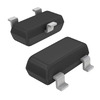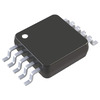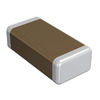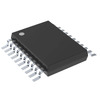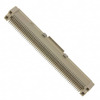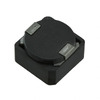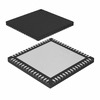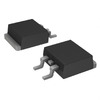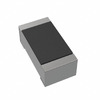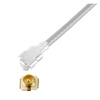CR927 Battery Equivalents and Replacements
CR927 batteries are useful parts of many small electronic devices, known for their small size and reliable performance. These coin-shaped batteries are commonly found in watches, calculators, and key fobs, and have specific features that suit many different uses. However, beyond their practical uses, it's very helpful to understand the equivalents, replacements, and safety issues related to CR927 batteries to ensure proper handling and use. This article aims to give a detailed look at the CR927 battery, its features, alternatives, and important safety considerations.
Catalog

Figure 1: CR927 Lithium Cell Battery
CR927 Battery Features and Specifications
The CR927 battery is a small, non-rechargeable lithium battery often used in small electronic devices. It measures about 9.5 mm in diameter and 2.7 mm in height, which is roughly 0.374 inches wide and 0.106 inches tall. The battery has a standard voltage of 3.0 volts and works well until the voltage drops to 2.0 volts. Its usual capacity ranges from 30 to 35 milliampere-hours (mAh), depending on factors such as the battery's age, the amount of power drawn from it, the device's voltage cutoff, and the temperature at which it operates.

Figure 2: CR927 Battery Dimensions and Specifications
CR927 batteries, which use manganese-dioxide lithium chemistry, usually last between 4 to 7 years when stored properly. However, with good storage conditions and high manufacturing quality, some models can last up to 10 years. Keeping these batteries cool can help extend their life and maintain their performance.
Several factors influence the actual capacity of the CR927 battery and affect how well it performs over time.
Battery age plays a large role in determining capacity. As batteries get older, they undergo chemical changes that reduce their ability to hold and deliver a charge effectively. Over time, the battery's internal resistance increases, making it harder for the charge to flow through. This increased resistance reduces both capacity and performance, so the battery delivers less power than when it was new.
The amount of power drawn from the battery, known as the drain current, also affects its capacity. When the battery faces higher drain currents, it struggles to maintain its standard voltage. This is due to the internal resistance causing a noticeable voltage drop under heavy loads. As a result, the battery's performance declines more quickly, and its capacity appears lower than it would under lighter loads. Devices that use more power can shorten the battery's effective life and usable capacity.
The device's voltage cutoff is another factor. Each device has a specific cutoff voltage, below which it stops working correctly. Devices with a higher cutoff voltage will stop working sooner as the battery discharges, reducing the battery's usable capacity. This means that even if the battery still has some charge left, it might not be enough to meet the device's voltage needs, causing the device to shut down sooner than it would with a battery that can keep a higher voltage for a longer time.
Battery temperature greatly affects capacity and lifespan. High temperatures can speed up the battery's self-discharge rate, reducing its overall capacity and shortening its life. Elevated temperatures can cause the electrolyte inside the battery to evaporate or the internal parts to degrade faster. On the other hand, very low temperatures can temporarily reduce the battery's capacity because the chemical reactions inside slow down. However, storing batteries at low temperatures can be helpful as it slows down the self-discharge rate and chemical breakdown, extending their shelf life.
Equivalent and Alternative Batteries
When discussing equivalent and alternative batteries to the CR927, two notable types are the BR927 and LiR927 batteries.
BR927 batteries use non-rechargeable carbon-monofluoride lithium chemistry. These batteries are less common but have a big advantage with their very low self-discharge rate, allowing them to remain functional for over 10 years. This long life makes them suitable for uses that need long-term reliability, such as CMOS or memory backup batteries. The low self-discharge rate ensures that even after years of non-use, the battery retains most of its charge, which is very helpful for devices that need to maintain memory without frequent battery changes.
LiR927 batteries, on the other hand, are based on rechargeable lithium-ion chemistry. They have a nominal voltage range of 3.6 to 3.7 volts, higher than the CR927's 3.0 volts. This voltage difference means that LiR927 batteries are not directly compatible with devices designed for
CR927 batteries. However, they support hundreds of charge and discharge cycles, making them a sustainable option in devices that can handle their voltage requirements. Using LiR927 batteries in compatible devices can greatly extend the time between battery replacements, offering both economic and environmental benefits. The ability to recharge these batteries reduces waste and the frequency of buying new batteries, which is good for both users and the environment.
DL927 vs. CR927 Batteries
DL927 and CR927 batteries are basically the same in specifications and performance. The DL927 label is used specifically for CR927 batteries made by Duracell. However, Duracell does not currently make CR927 batteries, so finding a Duracell DL927 battery is unlikely.
The CR927 battery is a coin cell battery with a width of 9.5 mm and a height of 2.7 mm. It has a standard voltage of 3.0 volts and a capacity of 30-35 milliampere-hours (mAh). The DL927 would have these same features if it were available.
When you come across a battery labeled DL927, it is important to check its manufacturing and expiration dates to make sure it works well. This is because using an old or badly stored battery can lead to poor performance or damage to your device.
Both DL927 and CR927 batteries use manganese-dioxide lithium chemistry, which gives a stable voltage output and a fairly long shelf life. However, the shelf life can vary based on storage conditions, usually lasting from 4 to 7 years, and sometimes up to 10 years for high-quality batteries stored in the best conditions.
LR927/SR927 vs. CR927 Batteries

Figure 3: LR927/SR927 vs. CR927 Batteries
LR927 and SR927 batteries are both single-use types. LR927 is an alkaline battery, while SR927 is a silver-oxide battery. They both have the same size: 9.5 mm across and 2.6 mm thick. However, their voltage is a bit different, with LR927 providing 1.5V and SR927 providing 1.55V.
CR927 batteries are lithium-based and also share the same size as LR927 and SR927 (9.5 mm across and 2.6 mm thick) but have a higher voltage of 3V.
Even though they look the same, these batteries can't be swapped because of their voltage differences. Using an LR927 or SR927 battery in a device meant for a CR927 battery might not give enough power, causing the device to fail. On the other hand, using a CR927 battery in a device meant for LR927 or SR927 batteries can give too much power, which might damage the device.
CR927 Battery Safety Issues

Figure 4: CR927 Battery Safety Features
CR927 batteries, although they don't have dangerous substances like cadmium, lead, and mercury, can still be very harmful, especially if swallowed. These small, coin-shaped batteries can cause serious injuries because of the electric reactions that happen in the body. When swallowed, the battery can produce an electric current, which can lead to chemical burns in the esophagus, stomach, or intestines. The effects can be very serious, including tissue damage, holes in the organs, and in severe cases, even death.
If a CR927 battery is swallowed, it is very important to get medical help right away. Contact the nearest emergency center or, if a pet swallows it, a veterinarian. Give them all the details about what happened and follow their instructions carefully. Acting quickly is very important to reduce potential harm.
Even though CR927 batteries are small, they should be handled very carefully. Keep them out of reach of children and pets to prevent accidental swallowing. Proper disposal and storage are also very important to avoid any safety risks.
Conclusion
CR927 batteries are small but strong parts used in many electronic devices. Knowing their features, like voltage and capacity, as well as their equivalents and alternatives, can help users choose the right ones for their needs. Safety is very important because these batteries can be very dangerous if swallowed. Handling, storing, and disposing of them properly is very important to avoid accidents. By understanding these points, users can use CR927 batteries effectively while reducing possible dangers.
Frequently Asked Questions [FAQ]
1. Are all CR batteries the same?
CR batteries are not all the same. They come in different sizes, shapes, and capacities, each made for different uses and devices. The "CR" name means they use lithium manganese dioxide chemistry, but their physical sizes and power levels can be different. For example, a CR2032 is much larger and can store more energy than a CR927. Each type of CR battery is designed to fit specific power needs and devices, so you can't swap them without checking these factors.
2. What batteries are equivalent to CR927?
Batteries that can replace the CR927 include the BR927 and LiR927. The BR927 battery is non-rechargeable and uses carbon-monofluoride lithium chemistry, which loses its charge very slowly over time. This makes it a good choice for long-term use, like keeping memory in devices. The LiR927 battery is rechargeable and uses lithium-ion chemistry, with a voltage range of 3.6 to 3.7 volts, which is a bit higher than the CR927’s 3.0 volts. While the BR927 lasts a long time without needing to be changed often, the LiR927 can be charged and used again in devices that can handle its higher voltage.
3. What kind of battery does my watch need?
The type of battery your watch needs depends on its make and model. Most watches use small round batteries, such as the CR2032, CR2025, SR626SW, or similar types. To find the right battery for your watch, check the user manual or the back of the watch case, which often shows the battery type. If this information is not available, you may need to open the watch's battery compartment or ask a jeweler or watch repair expert to help you find the right battery.
4. How to recharge CR927?
The CR927 is a non-rechargeable battery and cannot be recharged. Trying to recharge a CR927 battery can be dangerous, possibly causing the battery to leak, explode, or damage the device. If you need a rechargeable option, consider using a LiR927 battery, which is made for recharging. Always use a charger that matches the specific type of rechargeable battery to ensure safety and proper working.
5. What is the maximum current of CR927?
The maximum current of a CR927 battery is usually between 1 milliampere (mA) to 5 milliamperes (mA), depending on how it's made and who made it. This current rating shows the battery’s ability to supply a steady, low amount of power suitable for small electronic devices like watches, calculators, and small remote controls. It is important to use the battery within its specified limits to avoid shortening its life or causing damage to the device it powers.
About us
ALLELCO LIMITED
Read more
Quick inquiry
Please send an inquiry, we will respond immediately.

D Battery Vs. C Battery
on July 26th

The Complete Guide to Printheads: Types, Functions, and Maintenance
on July 25th
Popular Posts
-

What is GND in the circuit?
on January 1th 3172
-

RJ-45 Connector Guide: RJ-45 Connector Color Codes, Wiring Schemes, R-J45 Applications, RJ-45 Datasheets
on January 1th 2747
-

Understanding Power Supply Voltages in Electronics VCC, VDD, VEE, VSS, and GND
on November 17th 2411
-

Fiber Connector Types: SC Vs LC And LC Vs MTP
on January 1th 2216
-

Comparison Between DB9 and RS232
on January 1th 1836
-

What Is An LR44 Battery?
Electricity, that ubiquitous force, quietly permeates every aspect of our daily lives, from trivial gadgets to life-threatening medical equipment, it plays a silent role. However, truly grasping this energy, especially how to store and efficiently output it, is no easy task. It is against this background that this article will focus on a type of coin cell battery that may seem insignificant on the...on January 1th 1808
-

Understanding the Fundamentals:Inductance Resistance, andCapacitance
In the intricate dance of electrical engineering, a trio of fundamental elements takes center stage: inductance, resistance, and capacitance. Each bears unique traits that dictate the dynamic rhythms of electronic circuits. Here, we embark on a journey to decipher the complexities of these components, to uncover their distinct roles and practical uses within the vast electrical orchestra. Inductan...on January 1th 1763
-

CR2430 Battery Comprehensive Guide: Specifications, Applications and Comparison to CR2032 Batteries
What is CR2430 battery ?Benefits of CR2430 BatteriesNormCR2430 Battery ApplicationsCR2430 EquivalentCR2430 VS CR2032Battery CR2430 SizeWhat to look for when buying the CR2430 and equivalentsData Sheet PDFFrequently Asked Questions Batteries are the heart of small electronic devices. Among the many types available, coin cells play a crucial role, commonly found in calculators, remote controls, and ...on January 1th 1731
-

What Is RF and Why Do We Use It?
Radio Frequency (RF) technology is a key part of modern wireless communication, enabling data transmission over long distances without physical connections. This article delves into the basics of RF, explaining how electromagnetic radiation (EMR) makes RF communication possible. We will explore the principles of EMR, the creation and control of RF signals, and their wide-ranging uses. The article ...on January 1th 1723
-

Comprehensive guide to hFE in transistors
Transistors are crucial components in modern electronic devices, enabling signal amplification and control. This article delves into the knowledge surrounding hFE, including how to select a transistor's hFE value, how to find hFE, and the gain of different types of transistors. Through our exploration of hFE, we gain a deeper understanding of how transistors work and their role in electronic circu...on November 17th 1706




